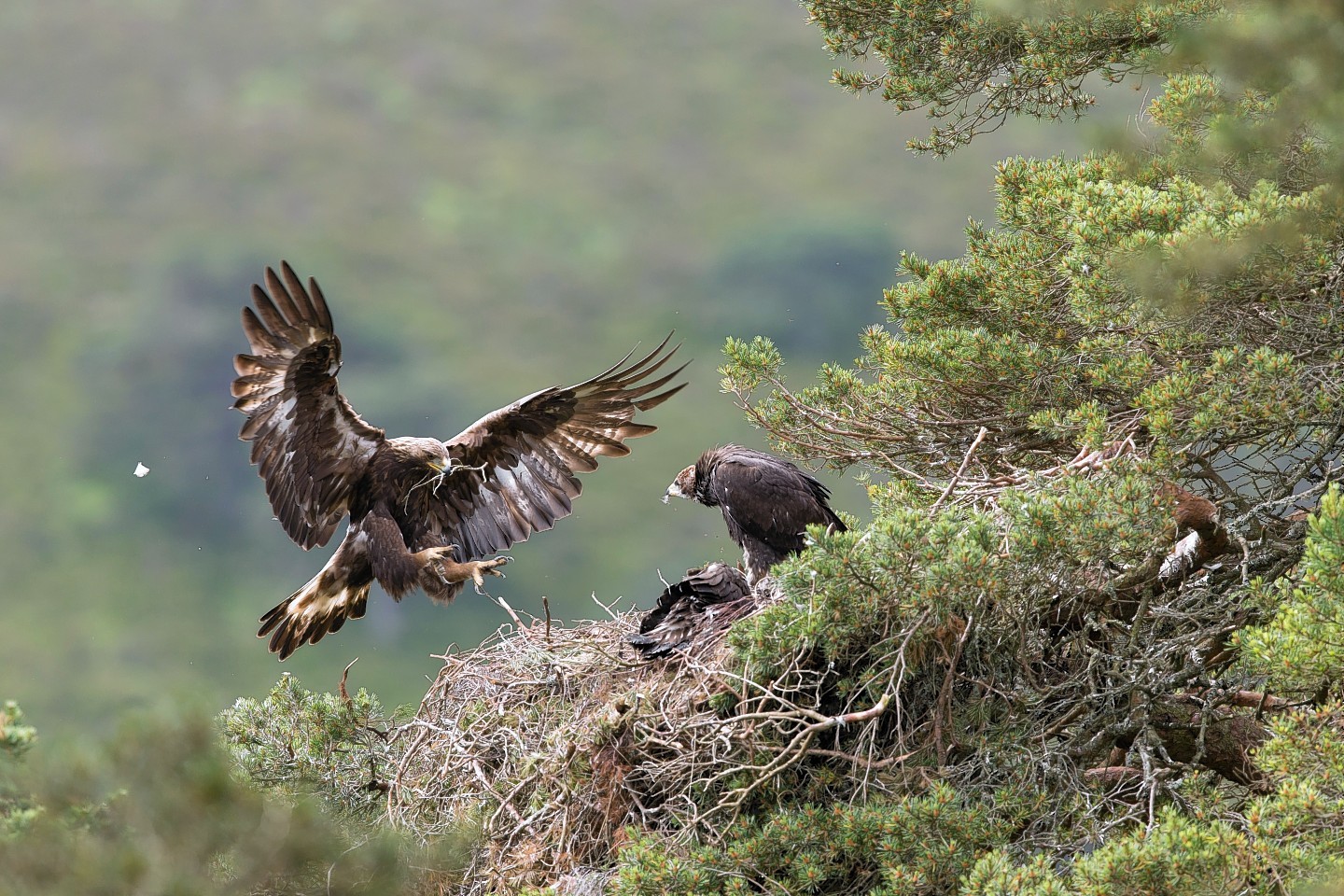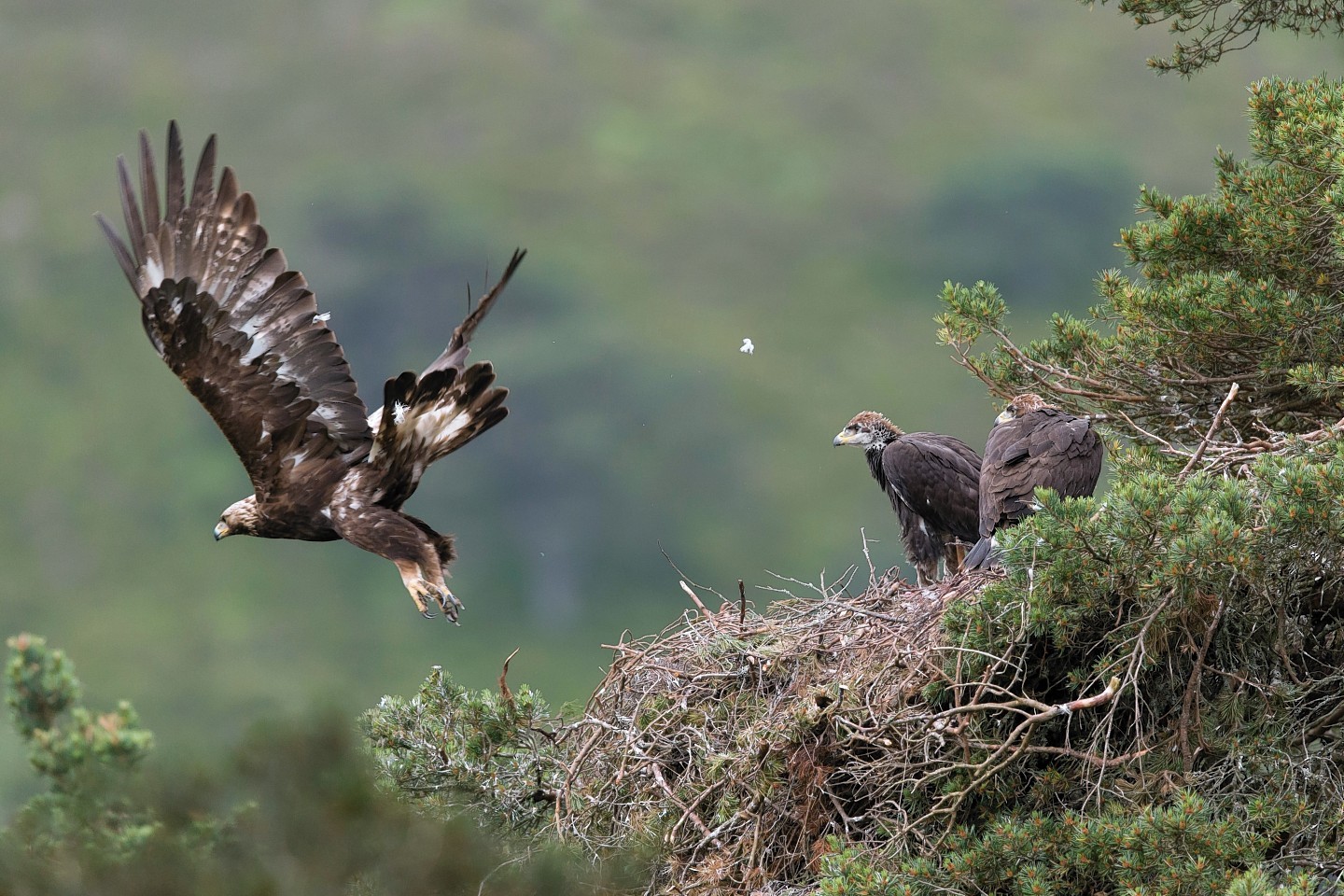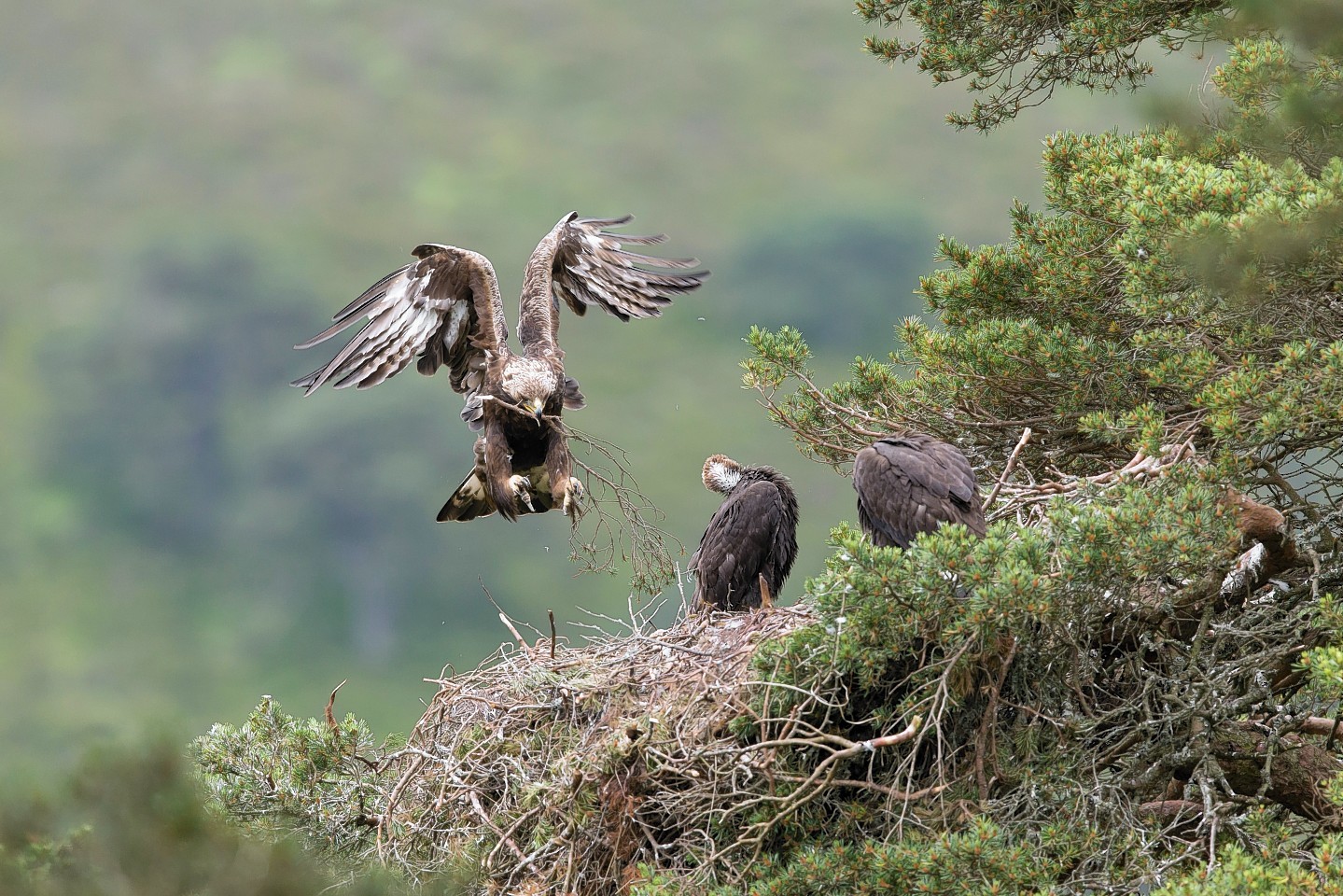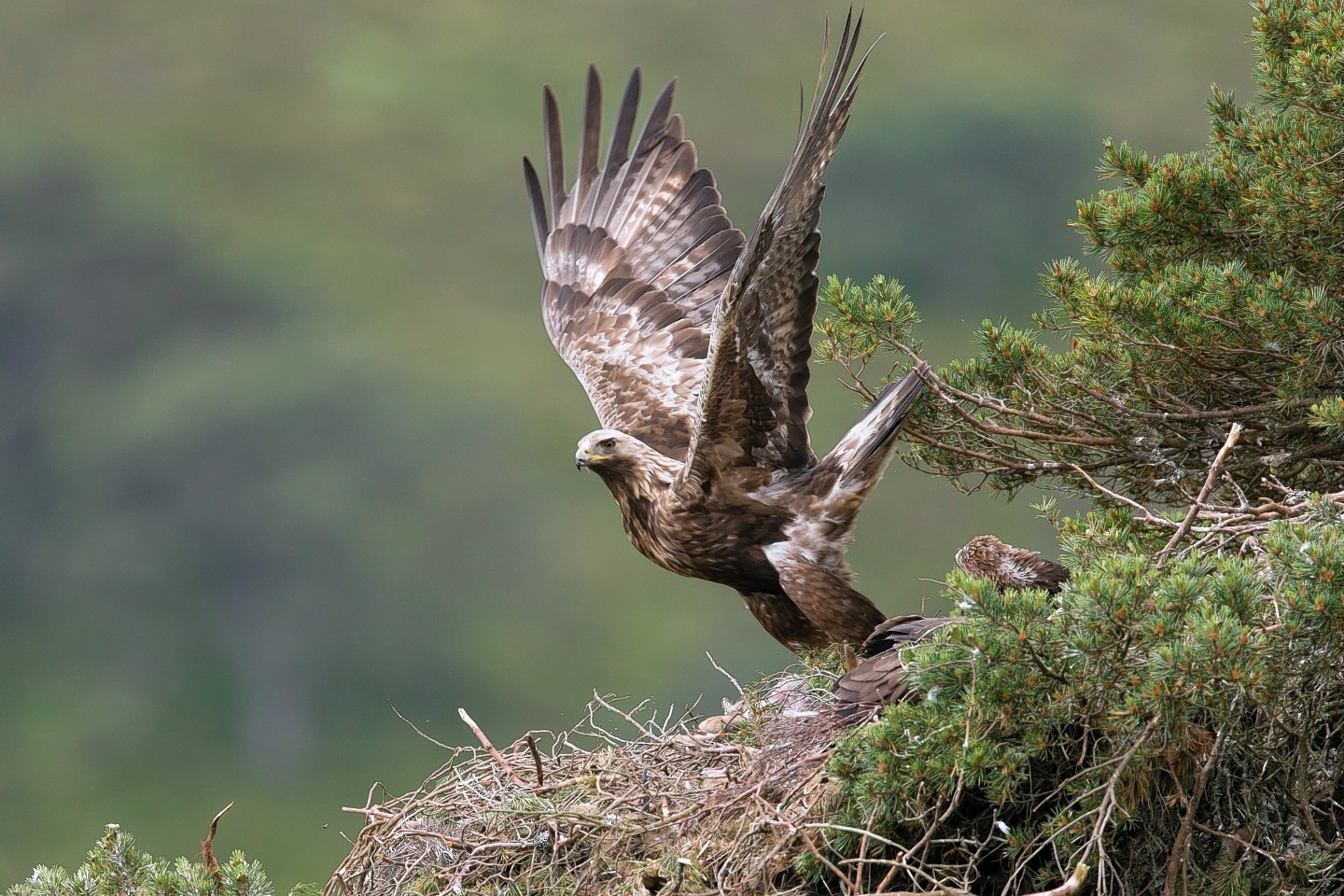A Highland photographer spent 20 hours watching a golden eagle nest in order to capture the perfect shot of the birds returning to feed their young.
Mark Hamblin, of Carrbridge, camped overnight in the hide on Glen Tanar Estate near Aboyne – with cheese sandwiches to keep him going.
The epic task involved sitting with his eye pressed up against a small peephole in the hide to make sure he did not miss the crucial moment.
And it paid off, as these spectacular pictures show.
Mr Hamblin now hopes that the shots will raise awareness of the rare bird.
There are only around 400 pairs in Scotland and in recent years several have been hit by illegal poisoning.
He said: “I am not a patient person ordinarily but when I get something in my mind that I want, I can be quite determined.
“There is the overarching desire to get the picture and you just stay vigilant to get the shot.”
His dedication meant that he even ate his sandwiches with his eye still glued to the peephole.
Eagles only visit the nest site a few times each day so there can be many hours between each visit.
At seven weeks old and just days away from leaving the nest, the chicks require less food.
The two adults returned to the nest three times in the evening, another in the early morning and then finally at 12pm, just an hour before Mr Hamblin left the hide.
He said that he had just a few seconds notice that the adults were returning to the nest because of the trees around the site.
He added: “They are very shy and wary bird and do not come close to humans if they can help it.
“It was a real privilege to for me to watch them.”
Against a continued background of illegal persecution of raptors, Glen Tanar Estate is bucking the trend. They see raptors not only as biologically important for the natural well being of the estate but also as a valuable financial resource.
Over the past two years they have been renting out a hide overlooking the nest of a pair of golden eagles to enthusiastic photographers from all over the UK, who have enjoyed close-up views of one of Britain’s most iconic and rarest birds.
All pictures by Mark Hamblin Photography.



